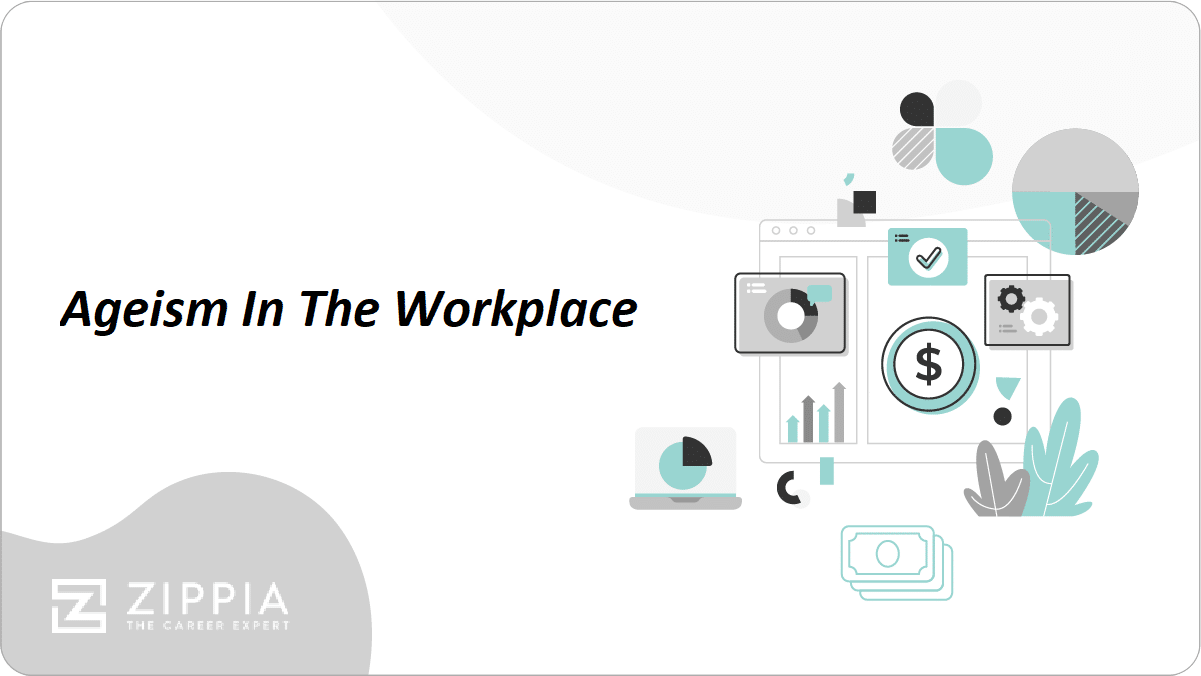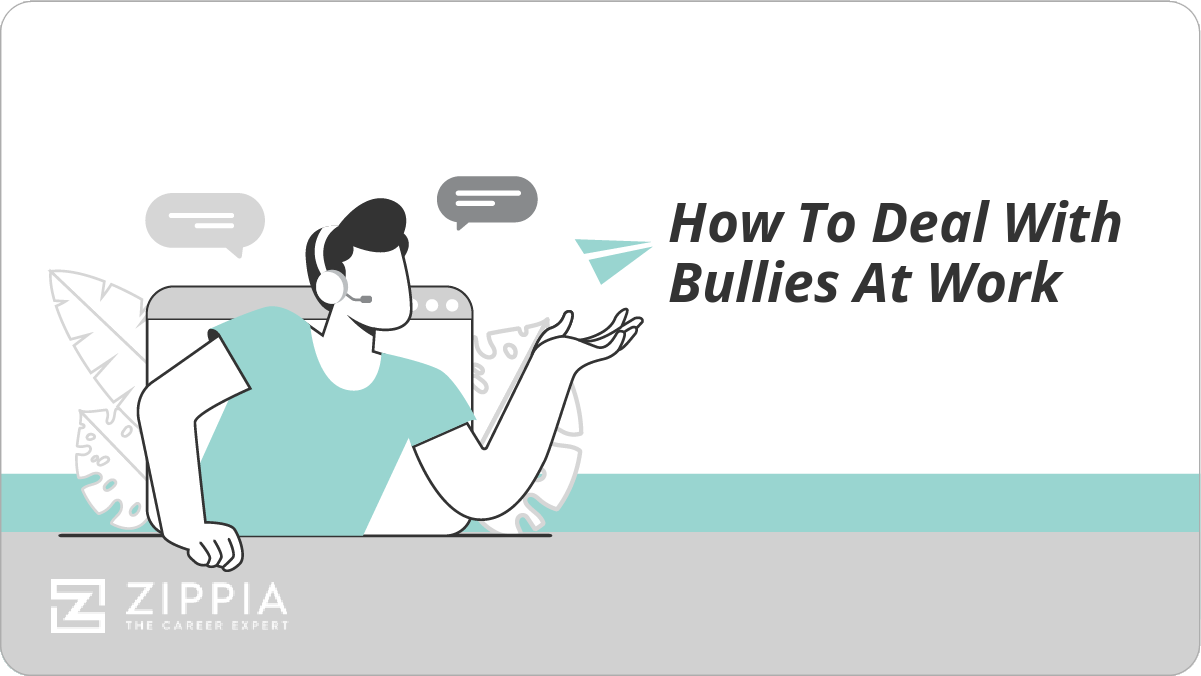- Hostile Work Environment
- Hostile Work Environment
- How To Deal With A Difficult Coworker
- What Is Human Resource Development (HRD)?
- I Hate My Job
- Burnt Out At Work
- Condescending Coworker
- Sexual Harassment In The Workplace
- Work Environment
- My Job Sucks
- Favoritism At Work
- Respect In The Workplace
- Wagner Act
- Documentation In The Workplace
- Unconscious Bias
- Ageism
- What To Do When You Feel Unappreciated At Work
- How To Respond To A Warning At Work
- How To Deal With A Passive Aggressive Coworker
- What To Do When You're Unhappy At Work
- I Hate My Boss
- Gaslighting Boss
- Signs You're Underpaid
- Insubordination At Work
Find a Job You Really Want In
The working age in the United States is steadily growing, especially as many Baby Boomers opt to keep working even part-time as they move into retirement age. However, working at an older age can oftentimes bring a negative stereotype to light for many older workers.
For many, fighting for equal standing or an ‘old person’ stereotype can be frustrating and disheartening. These individuals are victims of ageism.
In a survey of individuals 60 and older, almost 80% of respondents have said they experienced ageism.
Ageism doesn’t just affect people in the workplace. It can be a serious detriment to the mental health of older workers. Mental health problems often go untreated and undiagnosed in older individuals.
Key Takeaways:
-
Ageism is the stereotyping, discrimination, or bias against specific individuals or groups based solely on their age.
-
Signs of ageism include being passed over for challenging assignment and older employees are being fired or offered buyouts.
-
Ways to deal with ageism in the workplace is to keep the same level of professionalism that you’ve always had and keep working on your growth and development.

What Is Ageism?
Coined in 1969 by Robert Neil Butler, the term ageism refers to any discrimination against seniors including any discriminatory practices or institutional practices and policies that help perpetuate negative stereotypes of older individuals.
Much like racism or sexism, ageism is a reference to the stereotype and discrimination of people based on a single trait; their age. Ageism can include a variety of stereotypes and assumptions including disdain, avoiding contact, discrimination in housing, employment, and services.
Ageism negatively impacts people on both sides of the coin. Research even suggests that those with a negative view of aging can experience poor health than those with positive views on aging.
Unlike many forms of discrimination, society doesn’t actively try to combat ageism. Many accept ageism with little concern.
For example, anti-aging products are widely available and acceptable on television and digital platforms. If you ran a similar ad for anti-feminine or anti-race products, the company and advertisement would be met with harsh criticism.
Choose From 10+ Customizable Resume templates
Zippia allows you to choose from different easy-to-use resume templates, and provides you with expert advice. Using the templates, you can rest assured that the structure and format of your resume is top notch. Choose a template with the colors, fonts & text sizes that are appropriate for your industry.
What Ageism Looks Like
-
Forgetfulness. When you attribute forgetfulness to age, you are condoning ageism. When you misplace something as a young adult, it’s a minor inconvenience. When you have a memory lapse as an older individual, many people attribute it to an older age.
However, there is plenty of research that states this isn’t true. Most of our perceptions of age-related memory loss are exacerbated.
-
Marketing demographics. Did you know 90% of marketing dollars are typically targeted towards people under the age of 50, even though one-third of Americans are over 50?
-
Environment assumptions. Some venues have a negative connotation associated with them by people who think the purpose is to serve an older generation. Senior centers are a great example of this.
Other, younger individuals may not want to visit these places, as it’s a place for old people. These places are often spoken of negatively which seems to assume that the thought of being around older people is negative.
-
Disability or protective benefits. Society often assigns disability as common among older individuals. While disability is certainly more common here, it’s not always the case.
Based on improved medicine and individuals taking better care of their bodies, disability doesn’t impact the over 65 age group as prevalently. Additionally, many assume that older individuals are lonely or have been abandoned by their families.
However, senior individuals often have very active social lives, and based on a recent study, only one out of eight older people reported feeling any kind of loneliness.
-
Healthcare crisis. Research shows that there is a large divide between expert knowledge and public understanding of aging. Most of society assumes that aging is simply a loss of control and the body deteriorating.
However, research suggests that the features of our communities and homes are key to maintaining our health and independence as we get older.
How Does Ageism Affect Seniors?
Ageist stereotypes are hurtful to older people, but research suggests they can even shorten their lifespans.
-
Based on a report in the Journal of Personality and Social Psychology (Vol. 83, No. 2), those who are 50 or older who had more positive self-perception of aging, lived seven and a half years longer than those with negative self-perceptions.
-
Positive beliefs about aging towards the elderly can boost mental health. When older adults are exposed to positive stereotypes about aging, they have better memory and balance, whereas negative self-perceptions create more negative impacts like worse memory and feelings of worthlessness.
-
Age stereotypes are often internalized at a young age. Children as young as four have recognized ageist stereotypes that are likely reinforced throughout their lives. The media doesn’t help these negative portrayals of seniors.
-
Many programs or movies show older individuals as somewhat helpless or lonely, often not living full lives or being codependent on their younger families. This isn’t necessarily true for the majority of seniors living on their own.
How Does Ageism Impact More Than Just Older Adults?
Ageism has a lasting impact and not only on older adults. Research suggests that stereotypes about older individuals relate to how younger people expect them to behave.
-
This can present itself in a few different ways.
-
Succession. Younger individuals sometimes assume that their older counterparts or colleagues have “had their turn” at their careers, experiences, and opportunities. There is an expectation that older people will make way for the younger generations to have their turn.
-
Consumption. Some younger people feel that the limited resources they might have access to should be used for them and younger individuals, as opposed to older adults.
-
Identity. Younger individuals often feel that those who are older should behave their age and not assume specific things that make up the identity of younger generations. This can include things like digital platforms, speech patterns, how they dress, among other things.
These types of harmful assumptions impact older individuals or older groups, but can seriously impact younger individuals and how they view the world and their treatment of older individuals in their life.
-
-
The AARP has reported that one in five workers in the United States is over the age of 55 and of that number, almost 65% of workers have experienced age-based discrimination from their younger colleagues. Not just that, but many have reported that the biases began closer to age 50.
-
Ageism should be treated similarly to sex, race, and disability discrimination. Public awareness is incredibly important to raise attention to the issues that ageism can have on older people.
The generation of seniors is rapidly expanding and ageism is becoming increasingly concerning for those of a certain age. Finding ways to minimize ageism in your personal and professional life can help combat these negative perceptions of individuals over a certain age.
-
It’s not all bad, however. Progress has been made as it relates to ageism. Between the ’50s and ’90s, 80% of commercials continued to use negative age stereotypes, but more recently that number has dropped to 50%.
Emerging research also suggests that to get rid of the negative perceptions, we should focus on getting rid of deliberate intergenerational activities.
-
It may not be as easy as taking younger people to nursing homes. In reality, visits to nursing homes only perpetuate the stereotypes of aging. Only five percent of seniors are in nursing homes and so, it’s not a good representation of the senior population.
If younger individuals can have diverse exposure to older individuals, they’ll get a better idea of all the different ways one can age.
Signs Of Ageism In The Workplace
Here are some common signs of ageism in the workplace:
-
Learning opportunities are automatically offered to younger employees. If you notice that the younger employees are the ones who are getting more learning opportunities, chances are it can be because of ageism. This can include educational coursework, industry conference attendance, or opportunities for continuing education.
-
Being left out of meeting. If you are intentionally left out of meetings or company activities can be a sign.
-
Being passed over for challenging assignments. This could also be if older employees are given tedious assignments to keep them busy, or told the younger employees can handle the tough tasks.
-
Older employees are being fired or offered buyouts. This is often the most common thing that companies do. This is often called “culture fit.” Most times companies are eager to higher younger and less expensive workers. This is because they want workers who are around the same age and with the same mindset.
-
You start to hear comments about your age. IF your boss has ever asked “when are you going to retire?” They may even be asking in a friendly way. No matter how they ask, it’s because it’s on their mind.
-
You no longer get raises. If you had a great year and an excellent performance review, but didn’t get a raise that might be a sign of ageism. Check around to see if any of the younger employees got a raise and if they didn’t then it might just be cut backs, but if they did it’s something to be concerned about.
How To Deal With Ageism In The Workplace
-
Keep the same level of professionalism. Keep the same level of professionalism and work ethic that you have been having. You don’t want to give your employer any reason to use your performance as an excuse to fire or demote you.
-
Invest in your growth and development. Keep up with the current events that are happening in your industry. Even if your workplace is not offering to pay for your continued education, doesn’t mean you can’t do it.
-
Fight the stereotype of an aging professional. Most of the time older workers are labeled with “bad with technology.” They are often thought of as unwilling to learn new things. Fight this stereotype by keeping up with technology trends and learning new programs. It might be difficult at first, but once you get the hang of it, it will be easier.
-
Talk with Human Resources. If you believe there is ageism in the workplace, talk with your HR department. Make sure you document anything that could be considered ageism. This could be any unfair discipline, exclusion, or favoritism.
-
Consult an attorney. Proving age discrimination can be challenging. Working with an employment law attorney to file a lawsuit can help. You have as little as 180 days from the last discrimination to file a claim.
- Hostile Work Environment
- Hostile Work Environment
- How To Deal With A Difficult Coworker
- What Is Human Resource Development (HRD)?
- I Hate My Job
- Burnt Out At Work
- Condescending Coworker
- Sexual Harassment In The Workplace
- Work Environment
- My Job Sucks
- Favoritism At Work
- Respect In The Workplace
- Wagner Act
- Documentation In The Workplace
- Unconscious Bias
- Ageism
- What To Do When You Feel Unappreciated At Work
- How To Respond To A Warning At Work
- How To Deal With A Passive Aggressive Coworker
- What To Do When You're Unhappy At Work
- I Hate My Boss
- Gaslighting Boss
- Signs You're Underpaid
- Insubordination At Work

















